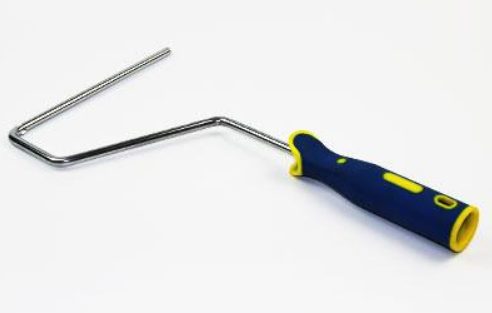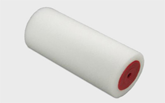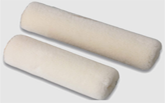How to Choose the Best Handle/Frame for a Paint Roller
Nov. 28, 2024When tackling a painting project, choosing the right paint roller handle or frame is critical to achieving a smooth, professional finish. A well-chosen handle can reduce fatigue, improve precision, and ensure consistent results. Below, we break down the essential factors to consider when selecting the best paint roller handle or frame for your needs.
Understanding the Basics of Paint Roller Handles and Frames
What Is a Paint Roller Handle/Frame?
The paint roller handle, or frame, is the backbone of your roller tool. It holds the roller cover securely and provides the necessary support for applying paint evenly on surfaces. The right handle/frame ensures smooth operation, reduces the risk of streaks or uneven application, and offers comfort during extended use.
Types of Paint Roller Handles
Paint roller handles come in various designs to suit different painting needs. Common types include:
- Standard Frames: Ideal for everyday use and compatible with most roller covers. These are typically lightweight and straightforward.
- Cage Roller Frames: Equipped with multiple support bars to hold the roller cover securely, preventing slippage and ensuring uniform paint distribution.
- Adjustable Frames: These allow you to change the size to accommodate different roller cover widths, offering versatility for various projects.
- Extension Pole Compatible Frames: Designed with threaded ends for attaching extension poles, these are perfect for painting ceilings or high walls.
Key Factors to Consider When Choosing a Paint Roller Handle
1. Frame Size
The size of the roller frame determines the width of the roller cover you can use. Common frame sizes include:
- 4-inch Frames: Best for small projects, such as furniture or trim work.
- 9-inch Frames: Standard for most interior walls and ceilings.
- 12 to 18-inch Frames: Ideal for large surfaces like commercial spaces or exterior walls.
Choose a frame size based on the scope of your project and the surface area to be painted.
2. Material and Build Quality
Durability is crucial for any painting tool. High-quality handles for paint roller are made from materials like:
- Plastic: Lightweight and affordable but may not withstand heavy-duty use.
- Metal (e.g., Aluminum or Steel): Offers excellent durability and strength for long-term projects.
- Wood: Classic and sturdy, though less common in modern roller frames.
Opt for a handle that is built to endure frequent use without compromising on comfort or stability.
3. Ergonomic Design
Painting can be a labor-intensive process, so comfort should not be overlooked. An ergonomic handle minimizes strain on your hands and wrists. Look for:
- Non-Slip Grips: Rubber or textured handles offer better control, especially in humid or sweaty conditions.
- Curved Shapes: Frames with contoured designs fit naturally in your hand, reducing fatigue during extended sessions.
4. Compatibility with Roller Covers
Not all handles work seamlessly with all roller covers. Ensure the for paint roller handle you choose fits the specific type of roller cover required for your project. Common nap lengths include:
- Short Nap (¼ inch): Best for smooth surfaces like drywall.
- Medium Nap (⅜–½ inch): Suitable for slightly textured surfaces like plaster.
- Long Nap (¾ inch or more): Designed for rough surfaces such as stucco or brick.
5. Ease of Cleaning and Maintenance
A good paint roller handle should be easy to clean after use. Handles with fewer moving parts or crevices are less likely to trap paint, reducing cleanup time and prolonging the tool’s lifespan.
Top Features to Look for in Premium Paint Roller Handles
Rust-Resistant Coating
Metal paint roller frames should have a rust-resistant coating to prevent corrosion from prolonged exposure to paint and cleaning agents.
Ball Bearings
Paint roller frames with built-in ball bearings offer smoother rolling motion, preventing skips or jerks during application.
Threaded Ends for Extension Poles
If you plan to work on ceilings or high walls, look for paint roller frames with a secure threaded end that fits extension poles.
Best Uses for Different Paint Roller Handles
- Home DIY Projects: A standard 9-inch frame with a medium nap cover works well for interior walls and ceilings.
- Professional Jobs: Opt for a cage roller frame with a durable build for frequent use and superior paint application.
- Hard-to-Reach Areas: Use a paint roller frame compatible with extension poles or one with an adjustable head for better reach and flexibility.
How to Choose the Best Type Paint Roller Frame for Any Project
Selecting the appropriate paint roller frame is crucial for achieving optimal results in your painting projects. Here's a guide to help you choose the best frame based on your specific needs:
1. Standard 9" Frame
Description: This is the most commonly used paint roller frame, featuring a 1-1/2" diameter core.
Ideal For: General-purpose use, suitable for both professionals and DIY enthusiasts.
Advantages: Offers smooth rolling action and quick roller cover release. Simply tap the frame against the edge of a utility sink or trash can to remove the cover.
2. 14" Frame
Description: A larger paint roller frame designed for efficiency.
Ideal For: Covering large areas swiftly, making it a preferred choice for busy professionals.
Advantages: Ensures smooth rolling and quick cover release, similar to the 9" frame. Tap against a utility sink or trash can to remove the cover.
3. 18" Fixed Frame
Description: The largest standard frame size.
Ideal For: Maximizing productivity on extensive surfaces.
Advantages: Allows for rapid coverage of large areas. However, it can be heavy and unwieldy when loaded with paint.
4. Premium Adjustable Frame
Description: A versatile paint roller frame with adjustable length.
Ideal For: Accommodating roller covers ranging from 12" to 18".
Advantages: Provides flexibility for various project sizes.
5. Jumbo Mini Frame
Description: Designed for small-scale projects and tight spaces.
Ideal For: Delivering a seamless finish in hard-to-reach areas and on small projects.
Advantages: Available in 12" and 22" lengths, compatible with 4-1/2" and 6-1/2" Jumbo Mini Roller Covers.
6. Wire Mini Frame
Description: A budget-friendly option for small projects.
Ideal For: Touch-ups and detailed work.
Advantages: Available in 14" and 24" lengths, designed for use with Wire Mini Rollers.
Key Considerations When Choosing a Frame:
Project Size: Larger frames (14" and 18") are suitable for expansive areas, while smaller frames (9" and mini sizes) are ideal for detailed work and tight spaces.
Surface Texture: For smooth surfaces, a thinner nap (3/16" to 1/4") is appropriate. Rougher surfaces may require a thicker nap (3/4" to 1-1/2").
Paint Type: Ensure the frame and roller cover are compatible with the type of paint you're using (e.g., oil-based or water-based).
Handle Comfort: Ergonomically designed handles can reduce fatigue, especially during extended use.
By carefully considering these factors, you can select the most suitable paint roller frame to achieve professional-quality results in your painting projects.
Conclusion: Invest in the Right Paint Roller Handle
Choosing the best paint roller handle/frame can elevate your painting experience and ensure exceptional results. By considering factors like size, material, ergonomics, and compatibility, you can find a tool that meets your specific needs and simplifies your painting tasks.
















